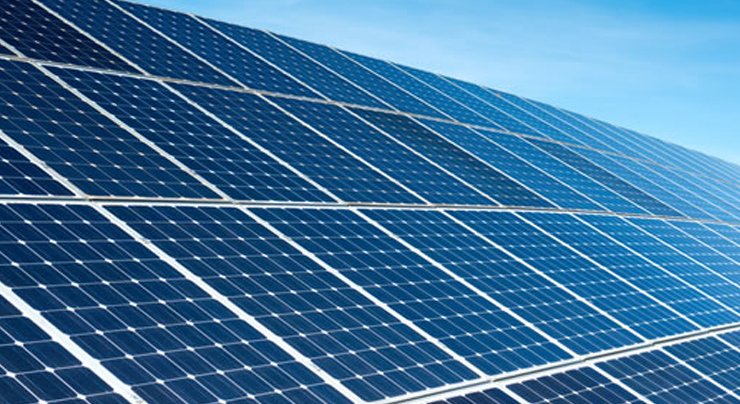
How graphite is used for photovoltaics, semiconductors and optical fibres
Type of Product and application
Slicing beams are used to cut silicon ingots into thin discs known as wafers. These wafers are then used to make photovoltaic (PV) cells for solar panels.
Applications: Cutting monocrystalline and polycrystalline silicon
Why graphite? Prevents the silicon from breaking away during the slicing process
Components used in the process of creating monocrystalline silicon ingots for solar panel production.
The silicon is purified, put into a crucible with other elements then melted at a very high temperature. A silicon rod is placed on the surface of the molten silicon in the crucible, and then pulled and rotated to form a monocrystalline ingot.
Applications: Monocrystalline silicon pulling (known as the Czochralski technique, and sometimes called CZ pulling)
Why graphite? Resistant to high temperatures, resistance to thermal shock, high melting point, high purity
Components used in the process of creating monocrystalline silicon ingots for semiconductors, which demand a higher level of purity than products used to manufacture solar panels.
In ion implantation, the ion beam collisions expose metal components to high amounts of wear. Graphite shields are used to protect such components.
Applications: Monocrystalline silicon pulling (known as the Czochralski technique, and sometimes called CZ pulling), epitaxy, ion implantation
Why graphite? Resistant to high temperatures, resistance to thermal shock, high melting point, high purity
Fibre-optic cable has to be manufactured to withstand stress in harsh environments (e.g. high temperatures, high risk of damage etc.). To achieve this, the cable is insulated or given a protective coating made of graphite.
Extremely pure graphite is also used to produce heating equipment for processing glass rods into the thin, light-conducting optical fibres.
Applications: Optical fibres
Why graphite? Resistant to high temperatures, resistance to thermal shock, high melting point, high purity
In glass-to-metal sealing, a conductor (whether electricity, light or gas) is passed from one airtight environment to another. The glass used provides the airtight seal, along with other components made of graphite, such as sealing jigs.
Applications: Glass-to-metal sealing
Why graphite? Resistant to oxidation, resistant to high temperatures, low abrasion, easy to machine
Most lithium-ion batteries have anodes made of graphite powder coated on copper foil. The benefit of graphite here is that it can reversibly place lithium-ions between its many layers.
Battery felts made of graphite allow an efficient charge between the electrolyte and bipolar plate when the battery is charged.
Applications: Energy storage (batteries)
Why graphite? Highly conductive, resistant to corrosion, high purity
A fuel cell is a device that combines hydrogen with oxygen to generate electricity, with water and heat as its by-product.
Inside the cell, graphite plates are attached to the electrode backings on either side. These plates conduct the energy from the electrodes and guide the flow of hydrogen and oxygen.
Applications: Fuel cells
Why graphite? Highly conductive, resistant to corrosion, high purity, low porosity
